Omusubi, or onigiri, are a Japanese food made from rice wrapped in nori (seaweed). With many delicious fillings and flavour variations these little rice balls are the perfect portable little snack or bento box addition!
Omusubi, aka Onigiri, is one of those foods that proves that simple really is the best. These humble little rice balls are a beloved staple in Japanese cuisine and are the best selling food in Japanese convenience stores! This is no surprise since they’re so nutritious, delicious, and convenient. They’re made from rice wrapped in nori seaweed and are usually plain, seasoned, or stuffed with fillings. They’re increasingly popular across the world with innovative flavours being created that put modern spins on this classic Japanese food. You can easily make delicious omusubi at home with your own favourite flavours and enjoy it as a snack or a meal!
What is Omusubi?
Omusubi, also known as onigiri, is a popular Japanese food that consists of rice shaped into a ball or triangle often wrapped in seaweed (nori) and made either plain, seasoned, or with some kind of savoury/salty filling. Traditional fillings include pickled plum (umeboshi), tuna salad, grilled salmon, or seasoned vegetables. Nowadays many flavours exist making it easy for everyone to love onigiri. They can be eaten as a snack, lunchbox item, or even a quick meal on the go.
Omusubi can sometimes be confused for sushi but they are very different. Omusubi is made from plain rice and the fish fillings are cooked unlike sushi which uses seasoned vinegared rice and raw fish. Both foods though are very well loved in Japan. Omusubi has been a staple in Japanese cuisine for centuries; its origin dates back to over 2000 years ago! It has become popular across the world now, just like sushi and other Japanese foods like ramen. I was surprised to see how popular it was on my recent trip to Paris where I visited an onigiri shop called Omusubi Gonbei that always had a long queue at lunch time. Their omusubi was truly delicious though and only about 2 to 3 euros, so I do recommend it if you go to Paris!
Ingredients of Omusubi
Omusubi typically consists of three main ingredients: rice, filling, and seaweed.
Rice
The most important ingredient in omusubi is the rice itself. The best rice for making onigiri is high quality short-grain Japonica “Koshihikari” white rice, because it absorbs the optimal amount of water which helps the omusubi to stick together. It is also important to cook rice as the Japanese do. Read here how to cook rice the Japanese way.
This Japanese rice is available from Japanese/Asian grocery stores. You can also get this rice from major supermarkets if you are in Australia (the brand is called Sun rice). This type of rice is also used for making sushi, so it may be labeled sushi rice.
Filling/seasonings
Omusubi is not only delicious but also versatile and customizable. You can get creative with different fillings and seasonings to suit your taste preferences or just eat them plain. Onigiri are very often just seasoned with a bit of salt and wrapped with nori or sprinkled with sesame seeds.
Seasonings: besides plain salt, other seasonings used for omusubi are furikake or yukari (which is a type of purple seasoning made from red shiso leaves). Popular brands of seasonings are Mizkan Omusubiyama and Marumiya. Flavors can range from wakame seaweed & salmon, daikon leaves, pickled plum & bonito flake, tuna Mayo, grilled cod roe etc. Just add the seasoning and mix into hot freshly cooked rice, then leave for a while. The dry seasoning ingredients will be steamed by residual heat in the hot rice and become soft and delicious.
Meat/Fish Fillings: typical ingredients are grilled salmon (shiojyake), tuna mayo, and shrimp tempura. You can also use yakiniku beef, fried chicken, or teriyaki chicken.
Vegetable Fillings: common vegetarian ingredients include pickled plum (umeboshi), konbu/kombu (seasoned kelp), katsuobushi (dried fish flakes), and takana (pickled Japanese mustard leaf).
The filling can be placed in the center of the rice ball or mixed into the rice before shaping it into a ball.
Seaweed
A key component of omusubi is the outer layer of dried seaweed called nori. The nori not only adds a unique flavor to the dish but also helps hold everything together when wrapping around the rice ball.
Use your favourite seasonings and fillings to create delicious and satisfying omusubi that can be enjoyed as snack or meal when paired with other dishes. You can also make your own authentic Japanese bento boxes by adding onigiri along with things like Tamagoyaki, Korokke, Karaage chicken, Teriyaki Meatballs, Yakitori, Tsukune chicken meatballs, and salad.
How to Make the Rice Balls
The freehand method
Basically, grab a handful of cooked rice and squeeze into balls (any shape) with your hands. However, you need to choose good rice. If the rice is too dry and does not hold moisture, it will not stick together. You need to wet your hands before you handle cooked rice or use plastic wrap. Then shape the rice balls with your hands while you are squeezing.
Using molds
If you are not confident in shaping onigiri freehand, there are molds available to help. When you use a mold, you also need to wet the mold before you put rice in it to avoid the rice sticking to it. Onigiri Molds are available from Japanese/Asian grocery stores or online.
Shapes of Omusubi
This shape is probably the easiest to make. Wet your hands so that the rice will not stick to them, and shape it into round balls. You can make it like a sphere or flatten it a bit like a circle. You can see this round circle shape of onigiri for takikomi gohan and sekihan azuki bean rice at convenience stores in Japan.
Round shaped
This shape is probably the easiest to make. Wet your hands so that the rice will not stick to them, and shape it into round balls. You can make it like a sphere or flatten it a bit like a circle. You can see this round circle shape of onigiri for takikomi gohan and sekihan azuki bean rice at convenience stores in Japan.
Triangle shaped
Shaping into triangles may be a little more difficult. Initially, you squeeze the rice the same as for shaping round rice balls. Then put it in one palm and use the other hand to form one triangular corner. Then keep rotating the rice ball on the palm while you squeeze the next corner every rotation.
Tawara (round cylinder) shape
This shape is not as difficult as the triangular one actually. Start with a round shape and then squeeze into a cylinder shape. This shape is known as Tawara which means straw bales.
Wrapping Rice Balls
We want to keep the nori sheet as fresh as possible. Have you ever bought Japanese rice balls wrapped with a rather complicated looking plastic wrap that separates the nori seaweed sheets? Rice ball Film Wrap are available online or you can make them at home. The instructions are in the FAQ below. Onigiri are also often served with the nori already wrapped around the rice which makes the nori soft and formed into the rice. If you prefer this way then it’s not necessary to separate the nori and the rice with any plastic wrapping.
Here is the instruction for making your own onigiri wrapping to separate the rice from the nori. You need aluminum foil and masking tape. Also, see the video.
- Stick masking tape vertically over the center of the aluminum foil on the kitchen bench or on a flat surface.
- Flip it over and place a nori sheet on the center vertically.
- Fold both sides of aluminum foil in.
- Spread sesame seed oil (or olive oil) over the aluminum foil.
- Place onigiri on the top half of the aluminum foil.
- Fold the bottom half over the onigiri to cover the onigiri.
- Secure the top with the end of the masking tape to seal it.
Tips to make delicious Onigiri
- Choose the correct rice -> Japonica short-grain rice, such as Koshihikari or labeled as sushi rice.
- Cook rice like Japanese do
- Use a mold for an easy way to shape the omusubi.
- Use plastic wrap or make your hands damp if using your hands to shape the omusubi to avoid the rice sticking all over your hands.
Onigiri variations
- Yaki Onigiri Grilled Rice Balls : this onigiri is coated in miso melted butter then grilled.
- Sake onigiri : salmon onigiri.
- Mentaiko Onigiri : mentaiko (marinated pollock or cod roe) mixed with mayo is spread on the onigiri and then they are grilled.
- Spam Musubi : a Hawaiian take on omusubi. These have grilled spam on top.
Rice dishes that can be shaped into balls
- Sekihan azuki bean rice
- Sekihan with chestnuts
- Ketchup rice : If you wrap the ketchup rice with a thinly fried egg, you can make Omurice onigiri. This is actually sold in convenience stores in Japan.
- Takikomi gohan
- Hijiki Rice
How to store
Unlike convenience stores’ rice balls, homemade rice balls do not contain any preservatives so it’s best to eat them fresh. It’s also tricky to store rice without it going dry in the fridge. Also if you use your hands to make them without plastic wrap, even though you wash your hands before you make the rice balls, contact with your hands will introduce germs which shorten the life of the rice. So it’s always recommend to eat the day you make them for the freshest and most delicious omusubi.
If you choose to wrap the omusubi with plastic wrap instead of the nori seaweed, it increases the life of the rice. You can keep them in a ziplock freezer bag. It stores in the freezer for a month.
Stay connected
If you liked my Onigiri recipes, please leave a comment below and rate the recipe!
If you like the recipe please rate the recipe and leave comments below. Also don’t forget to follow me on Youtube, Pinterest, Facebook, Twitter and Instagram. This way you keep up to date with all the latest happenings on Chopstick Chronicles. Don’t forget to Sign up for a weekly newsletter so you never miss out on new authentic delicious Japanese recipes! Sign up form is on the right-hand sidebar.
Omusubi: How to Make Japanese Onigiri (Rice Balls)
Omusubi, or onigiri, are a Japanese food made from rice wrapped in nori (seaweed). With many delicious fillings and flavour variations these little rice balls are the perfect portable little snack or bento box addition!
Course: Rice, Rice dish, Snack
Cuisine: Japanese
Prep Time 10 minutes
Cook Time 10 minutes
Total Time 20 minutes
Servings: 6 balls
Calories: 245kcal
Rate this recipe
Ingredients
- ▢ ½cup/310g rice (uncooked) *1
- ▢ 1 nori (seaweed) sheets *2
- ▢ 1 seeded umeboshi pickled plum
- ▢ 2 tbsp of bonito flakes *or 2.5g if you have a kitchen scale
- ▢ ½ tsp soy sauce
- ▢ ½ tsp mirin
- ▢ 95 g tinned tuna *3
- ▢ ½ tbsp Japanese mayonnaise
- ▢ 1 piece Salted salmon *4
Instructions
Cook the rice according to your rice cooker or if you don’t have a rice cooker, follow the instructions here. *5
Transfer the cooked rice to a separate bowl to cool it down. I used a Japanese wooden bowl*6 for sushi making.
Prepare all the fillings that you are going to use and set aside. *7 see some suggestions
I used Umeboshi (pickled plum), Okaka (bonito flakes), and Tuna. For Umeboshi, deseed the plums then divide the flesh into three chunks. For Okaka, place bonito flakes into a small mixing bowl and combine with soy sauce and mirin. For Tuna, drain the brine or olive oil and mix with 1 tbsp mayonnaise.
Prepare seaweed sheet (nori). *8
Place plastic wrap over a rice bowl.
Place ⅙ of the cooked rice ( 3/4 cup or 120g) over the centre of the plastic wrap and make a well.
Put about 1tsp of umeboshi (or any fillings of your choice) on the centre of the rice then cover with the rice around.
Wrap the plastic wrap over the rice and squeeze and mould the rice into a triangle shape with your hands.
Remove the plastic wrap and cover the bottom of the rice triangle with a nori sheet and set aside.
Repeat the same steps as above to use rest of the rice with other fillings that you prepared.
Notes
Cooking rice is not included in the cooking time.
*1 Preferably Japonica Short grain rice such as “koshihikari” or the rice packet labeled “sushi rice”.
*2 If you are going to make the special onigiri film, you need 3 nori sheets and cut them in half length wise. Nori sheets are usually 7.5 x 8 inch (19 x 20 cm). Cut them into 3.75 x 8 inch (9.5 x 20 cm) in size.
*3 You do not need all of this amount. Left over can be used for Sushi rolls or tuna sandwich.
*4 Need approximately 1/4 of the piece ( weighed 5 oz /150 g). Left over can be used for Obento filling or Sushi rolls.
*5 How to cook rice without a rice cooker
*6 There are special wooden containers called “ohitsu” to keep cooked rice in Japan. Once the rice is cooked, the rice needs to be loosened with a wooden spatula then keep it in the wooden container. Because the wooden container will absorb the extra moisture and make the cooked rice plump but not soggy.
*7 Pickled plum, bonito flakes seasoned with soy sauce and mirin, tuna flavoured with mayonnaise, kelp simmered in soy sauce (tsukudani), teriyaki chicken, yakiniku (grilled beef) etc. Fillings in the ingredients list are the ones I used for this rice balls recipe.
*8 In Japan or from Japanese grocery stores, you can find nori already cut to the size of a regular Onigiri. If you can only get nori sheets for making sushi, I usually briefly roast it under a low oven or grill setting, and then cut out into 8 strips.
Also If you are going to take the rice balls for lunch and keep the nori sheets fresh, follow the wrapping instructions given in the above post.
Nutrition
Calories: 245kcal | Carbohydrates: 38g | Protein: 16g | Fat: 1g | Cholesterol: 20mg | Sodium: 281mg | Potassium: 128mg | Vitamin A: 25IU | Calcium: 8mg | Iron: 0.8mg
Did you make this recipe? Show me how you went on Instagram! Mention @chopstickchronicles
Chopstick Chronicles is a participant in the Amazon Services LLC Associates Program, an affiliate advertising program designed to provide a means for sites to earn advertising fees by advertising and linking to Amazon.com. As an amazon associate I earn from qualifying purchases.

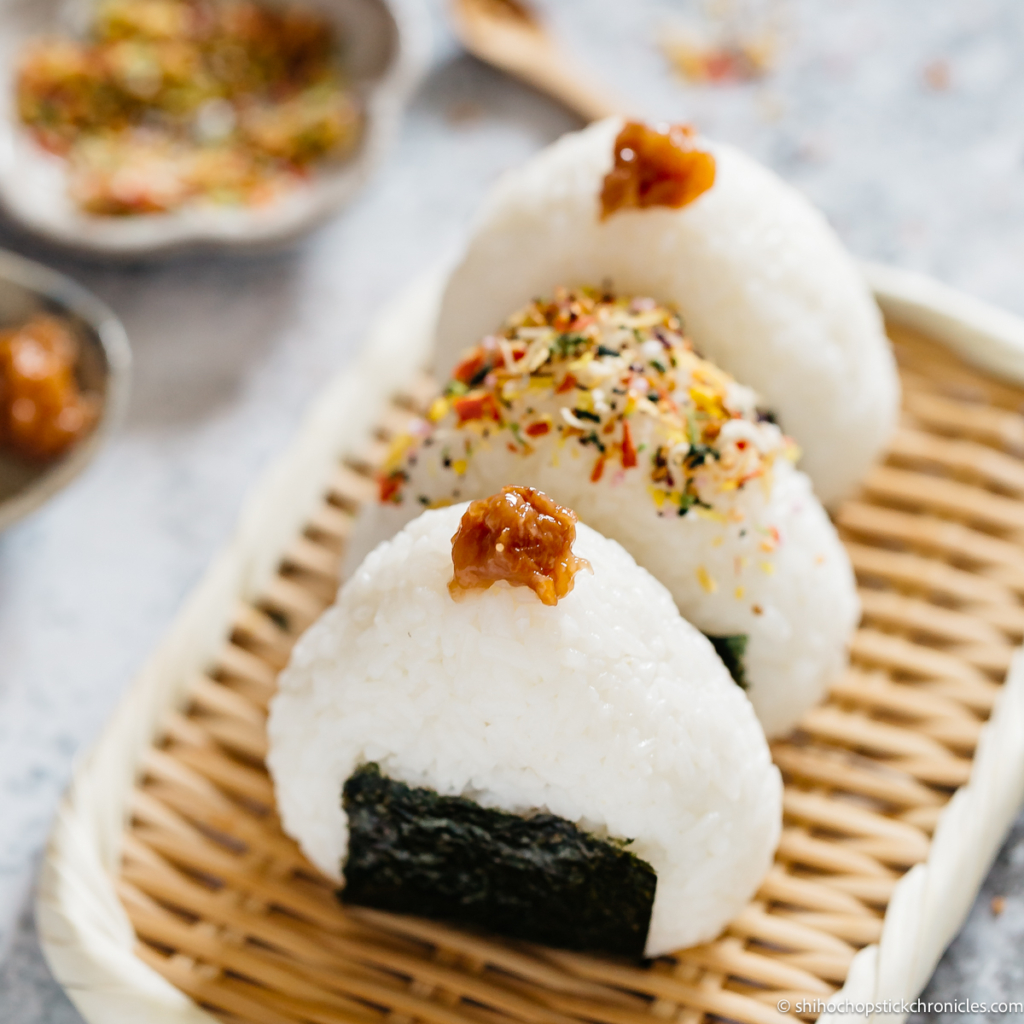
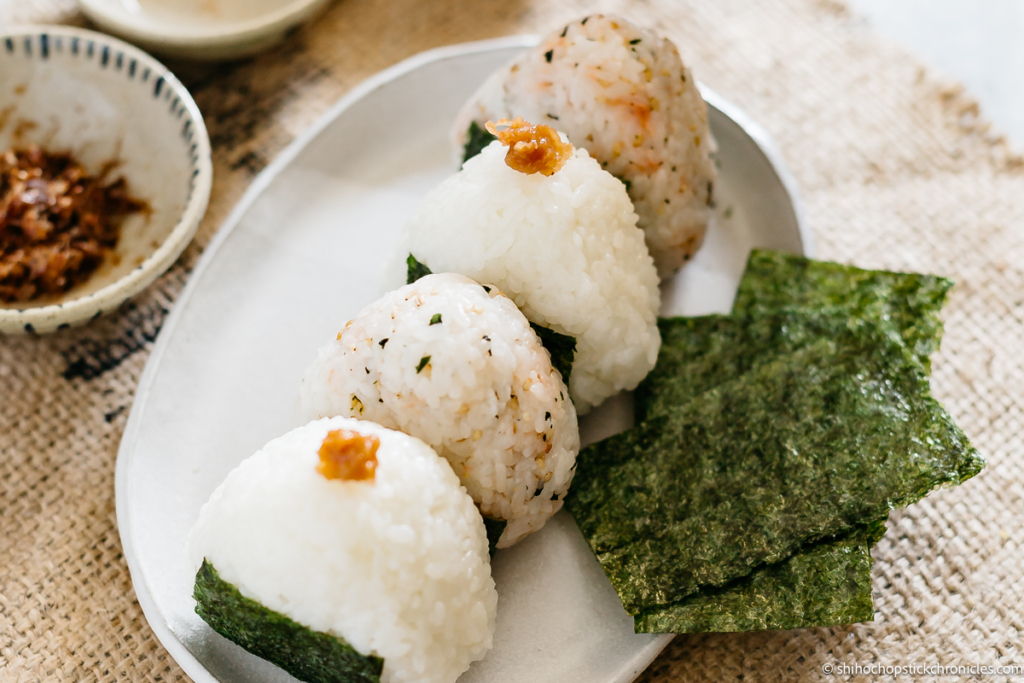
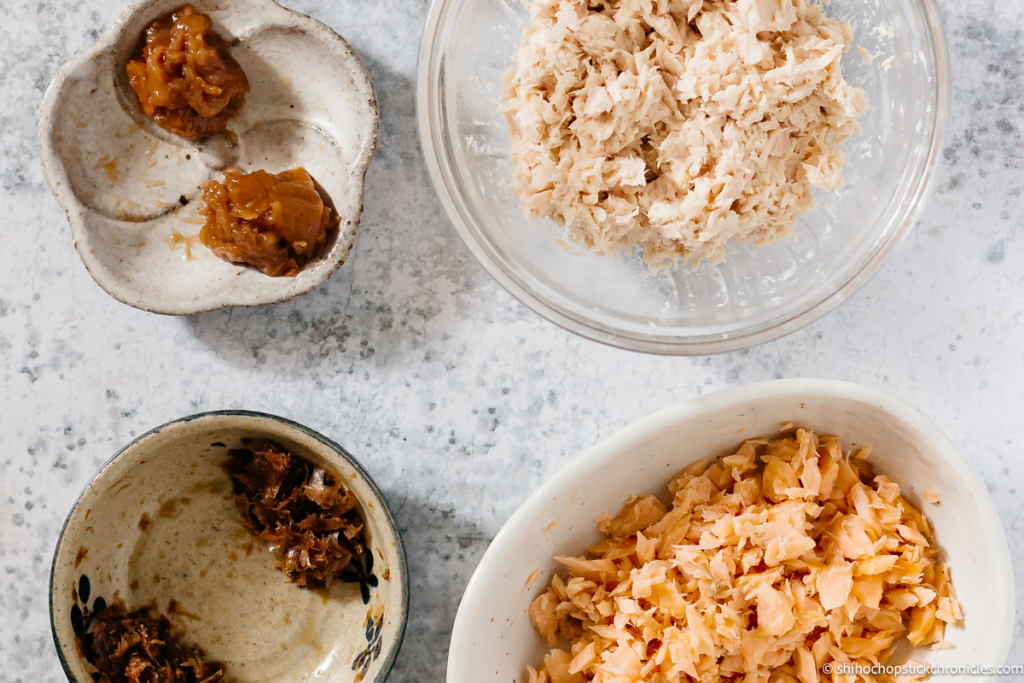
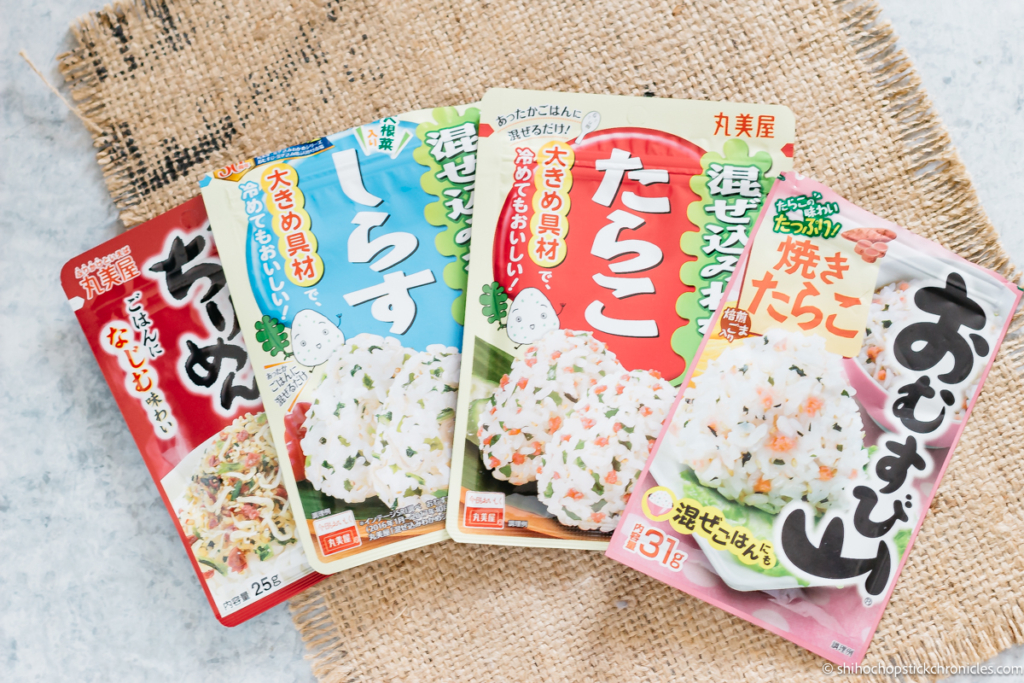
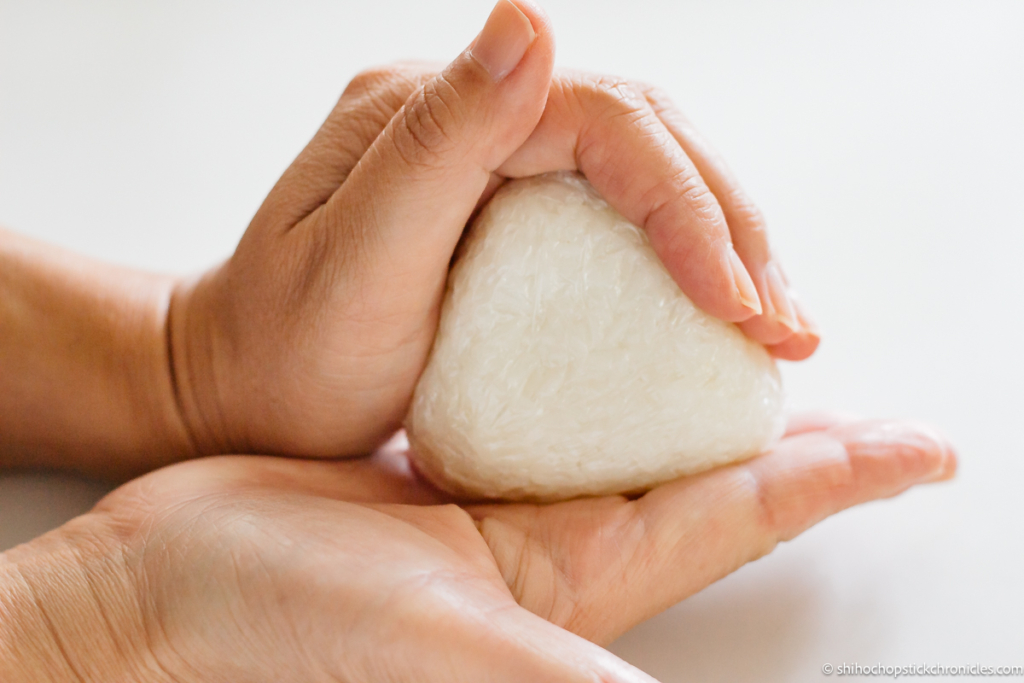
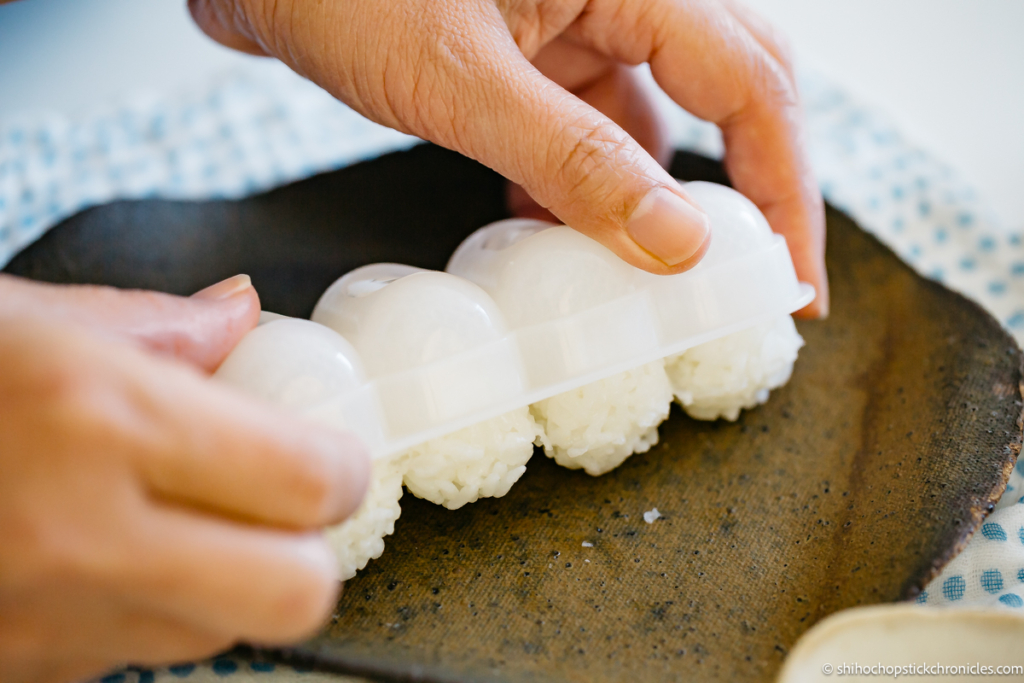
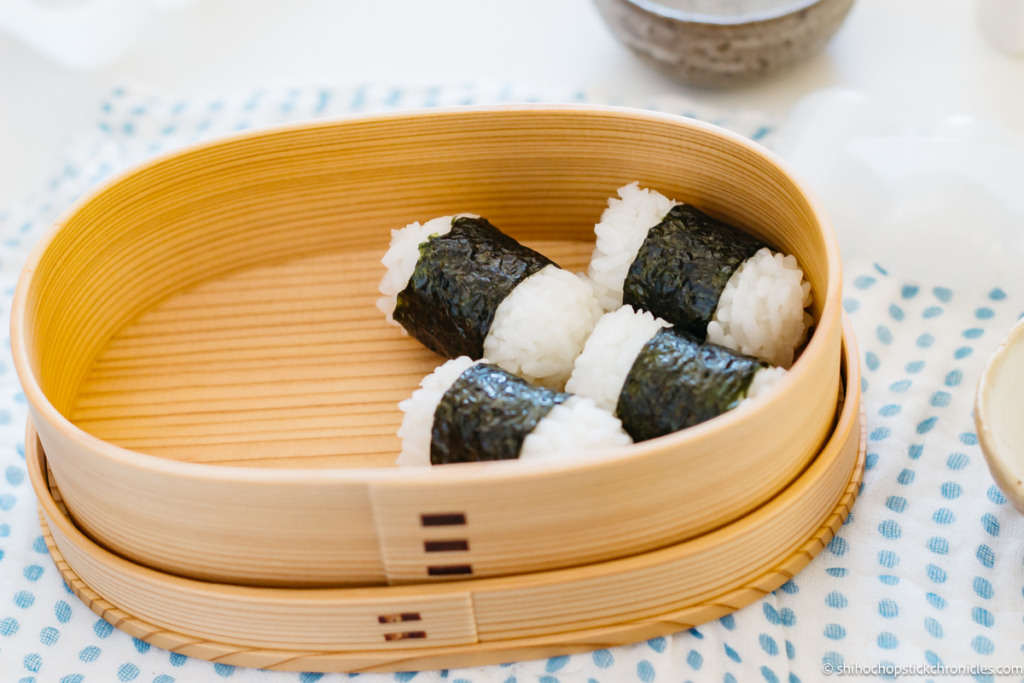
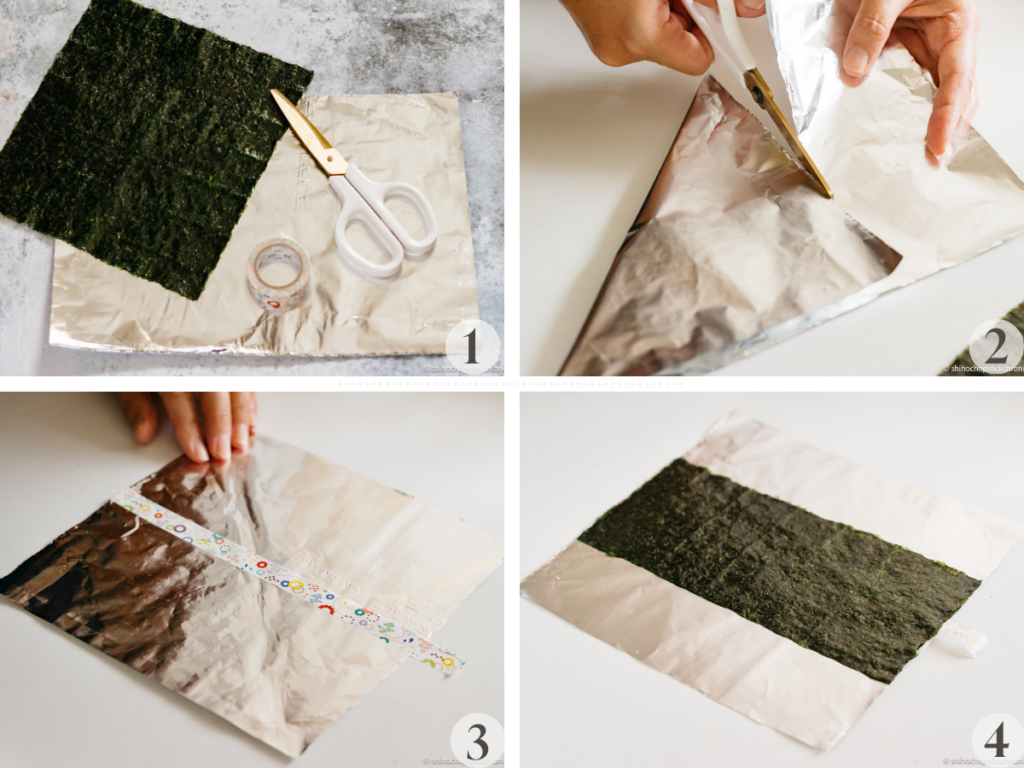
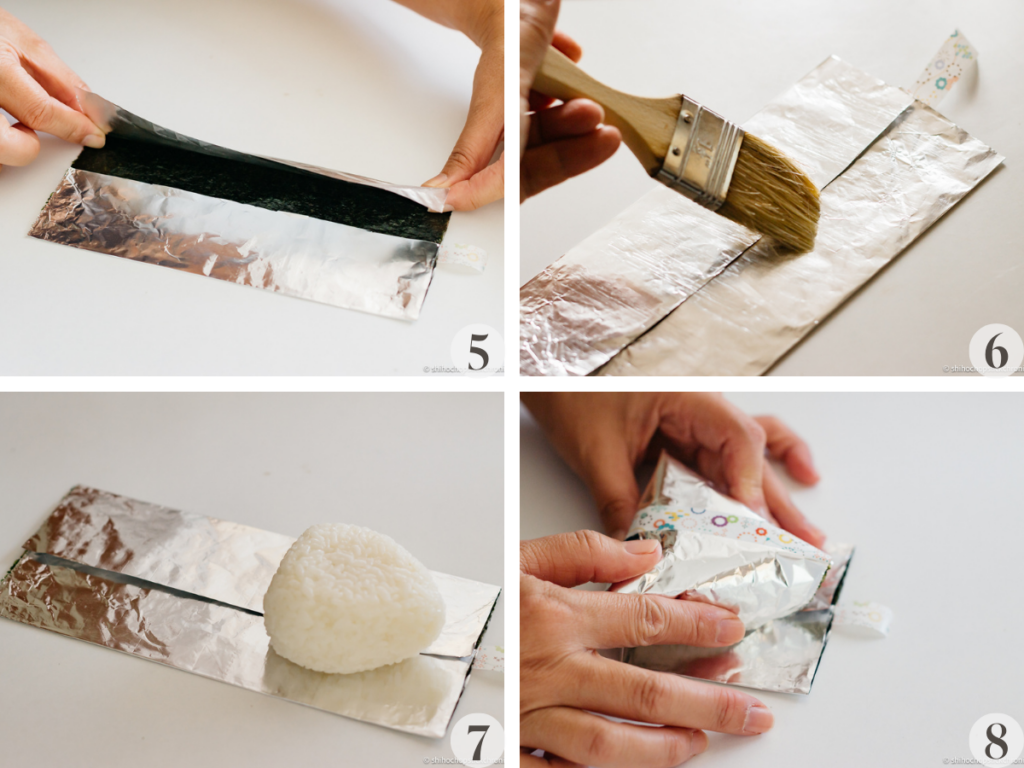
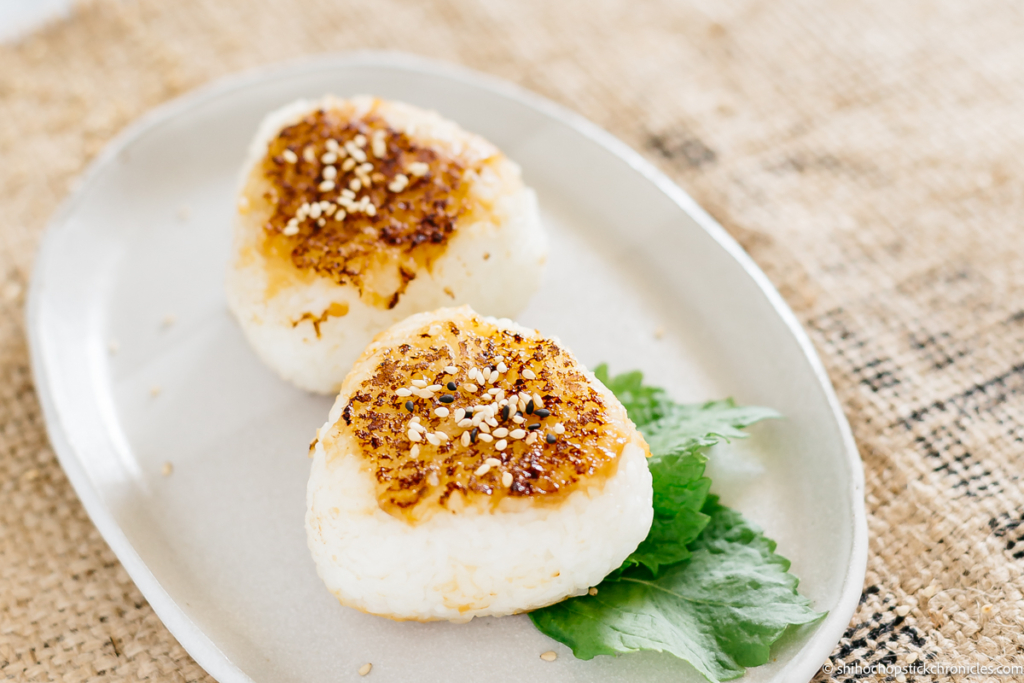
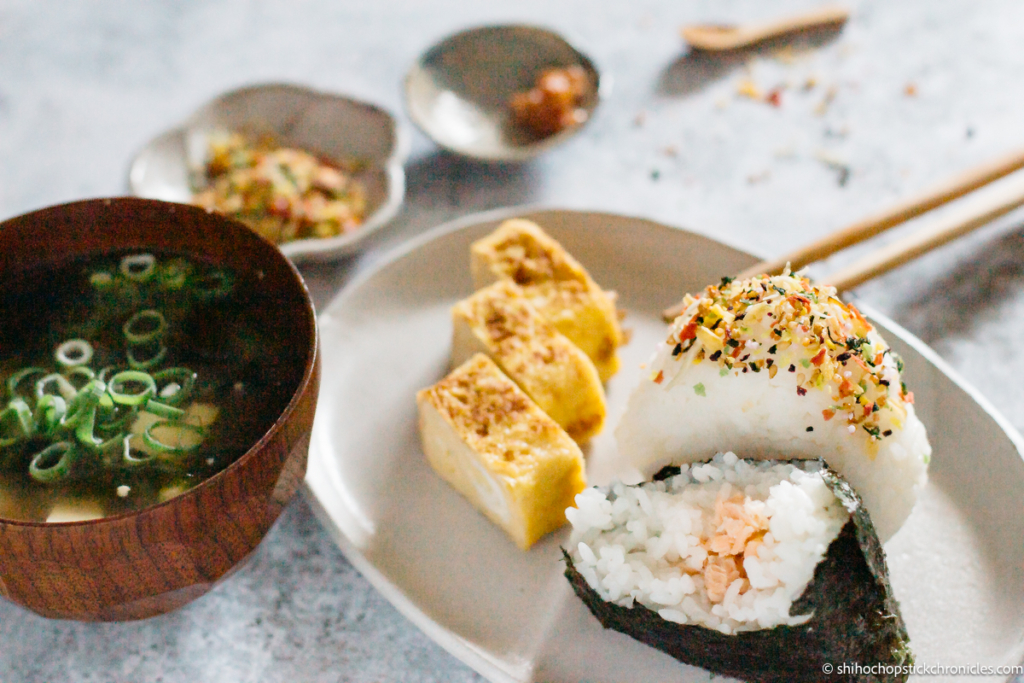
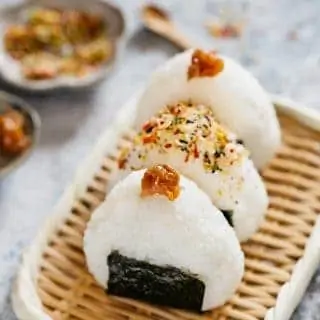



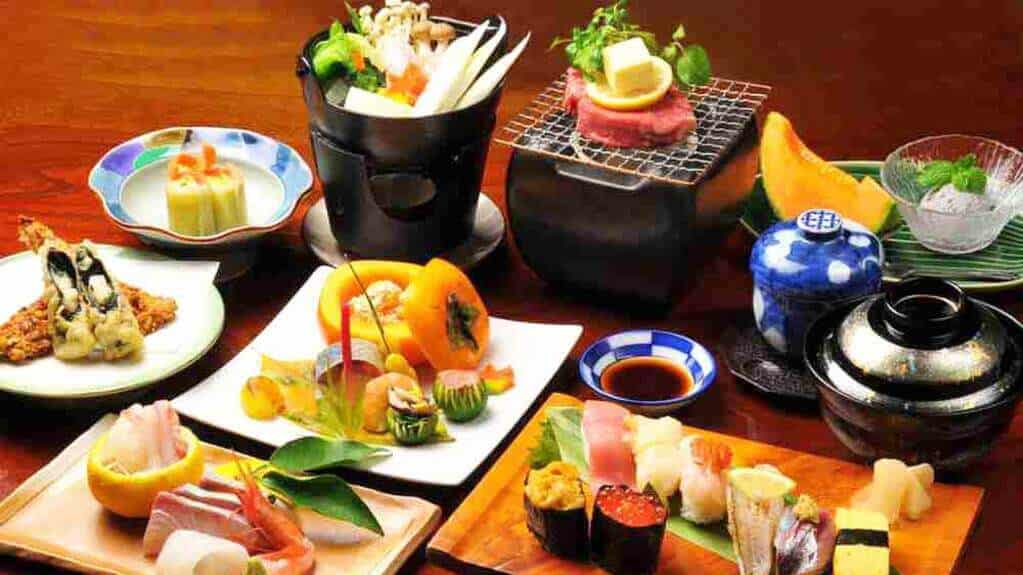




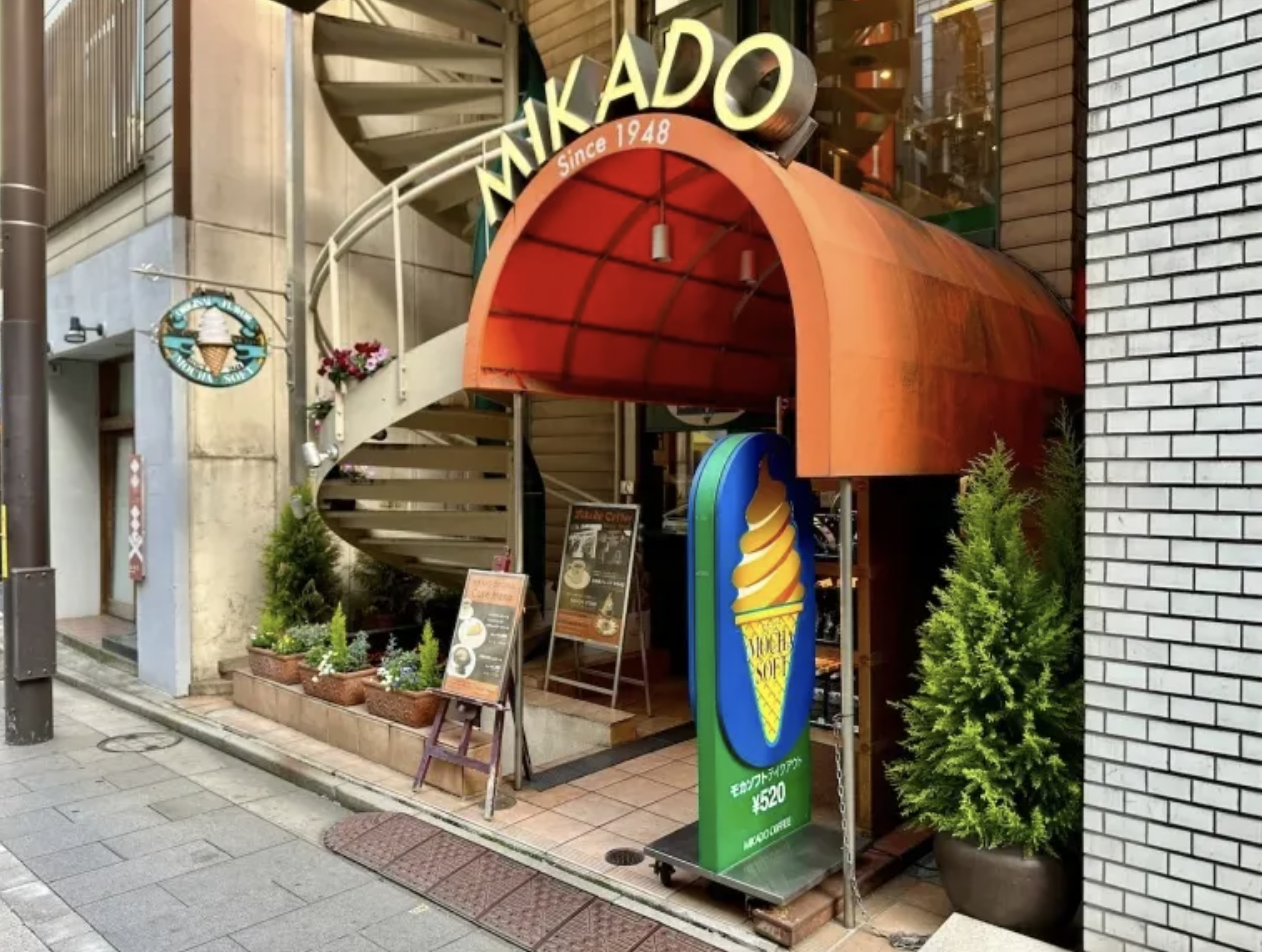
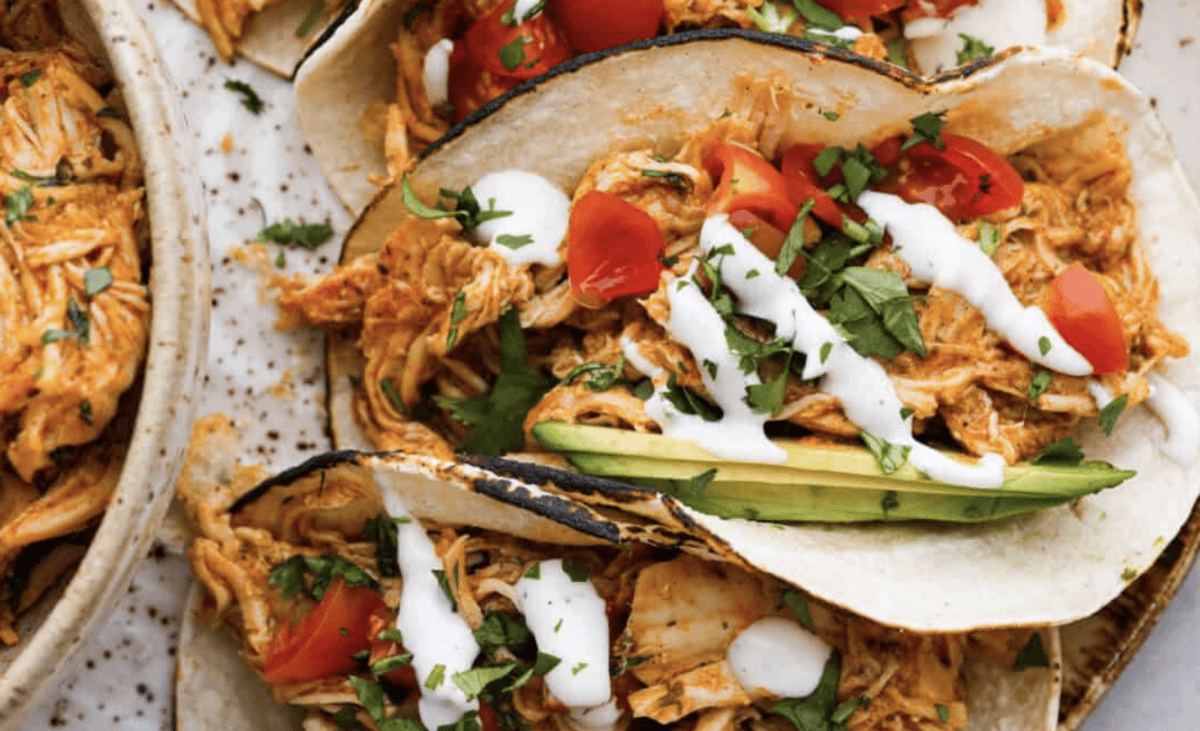
 English (US) ·
English (US) ·